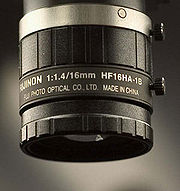
Vision Guided Robotic Systems
Encyclopedia
Introduction
A Vision Guided Robot System comprises three core systems including robotic system, vision system, and component bulk handling system (hopper or conveyor system).The vision system determines the position of randomly fed products onto a recycling conveyor system. The vision system and control software gives the robot exact coordinates of the components, which are spread out randomly beneath the camera field of vision, enabling the robot arm(s) to move to a selected component and pick from the conveyor belt. The conveyor, normally, stops under the camera where the position of the parts is determined. If the cycle time is short it is also possible to pick a component without stopping the conveyor. This is achieved by fitting an encoder to the conveyor and tracking the component through the vision software.
This functionality is usually referred to as vision guided robotics (VGR). It is a fast growing technology and a way to reduce manpower and retain production, especially in countries with high manufacturing overheads and labour costs.
Vision systems for robot guidance

A camera can be anything from a standard compact camera system with integrated vision processor to more complex laser sensors and high resolution high speed cameras. Combinations of several cameras to build up 3D images of an object are also available.
Limitations of a vision system
There are always difficulties of integrated vision system to match the camera with the set expectations of the system, in most cases this is caused by lack of knowledge on behalf of the integrator or machine builder. Many vision systems can be applied successfully to virtually any production activity, as long as the user knows exactly how to set up system parameters. This set-up, however, requires a large amount of knowledge by the integrator and the number of possibilities can make the solution complex. Lighting in industrial environments can be another major downfall of many vision systems.VGR systems Benefits
Traditional automation means serial production with large batch sizes and limited flexibility. Complete automation lines are usually built up around a single product or possibly a small family of similar products that can run in the same production line. If a component is changed or if a complete new product is introduced, this usually causes large changes in the automation process-in most cases new component fixtures are required with time consuming set up procedures. If components are delivered to the process by traditional hoppers and vibratory feeders, new bowl feeder tooling or additional bowl feeder tops are required. It may be that different product must be manufactured on the same process line, the cost for pallets, fixtures and bowl feeders can often be a large part of the investment. Other areas to be considered are space constraints, storage of change parts, spare components, and changeover time between products.VGR systems can run side-by-side with very little mechanical set up, in the most extreme cases a gripper change is the only requirement, and the need to position components to set pick-up position is eliminated. With its vision system and control software, it is possible for the VGR system to handle different types of components. Parts with various geometry, can be fed in any random orientation to the system and be picked and placed without any mechanical changes to the machine, resulting in quick changeover times. Other features and benefits of VGR system are:
- Switching between products and batch runs is software controlled and very fast, with no mechanical adjustments.
- High residual value, even if production is changed.
- Short lead times, and short payback periods
- High machinery efficiency, reliability, and flexibility
- Possibility to integrate a majority of secondary operations such as deburring, clean blowing, washing, measuring and so on.
- Reduces manual work

